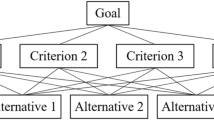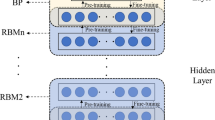Abstract
γ-TiAl alloy is a typically difficult material to machine, with common machining defects such as grain pull-out and material spalling during machining, resulting in component scrap. As a result, it is critical to investigate the monitoring method of surface roughness during milling. A new model for predicting surface roughness is proposed in this paper. The prediction problem of surface roughness is turned into a classification problem based on deep learning. The features of the force signal are extracted using a continuous wavelet transform, and the one-dimensional signal is converted into a two-dimensional time–frequency diagram to obtain additional information. The transfer learning mechanism is introduced to make the model faster and improve prediction accuracy. The overfitting problem is solved, and the model’s generalization ability is improved through batch normalization and a dropout layer. The results show that the method has high recognition accuracy, with a maximum classification accuracy of 98% and an average accuracy of 96.12%, i.e., a 10.52% improvement over the traditional model, allowing it to accurately realize monitoring of surface quality in milling processing.

















Similar content being viewed by others
References
Yao C, Lin J, Wu D, Ren J (2018) Surface integrity and fatigue behavior when turning γ-TiAl alloy with optimized PVD-coated carbide inserts. Chin J Aeronaut 31(4):826–836. https://doi.org/10.1016/j.cja.2017.06.002
Xu R, Li M, Zhao Y (2023) A review of microstructure control and mechanical performance optimization of γ-TiAl alloys. J Alloy Compd 932:183–201. https://doi.org/10.1016/j.jallcom.2022.167611
Mantle AL, Aspinwall DK (2001) Surface integrity of a high speed milled gamma titanium aluminide. J Mater Process Technol 118(1):143–150. https://doi.org/10.1016/S0924-0136(01)00914-1
Genc O, Unal R (2022) Development of gamma titanium aluminide (γ-TiAl) alloys: a review. J Alloy Compd 929:167–179. https://doi.org/10.1016/j.jallcom.2022.167262
Bailey GW, McKernan S, Price RL, Walck SD, Charest PM, Gauvin R, Russ JC (2000) Characterization of surface roughness. Microsc Microanal 6(S2):916–917. https://doi.org/10.1016/0043-1648(62)90002-9
Jeyapoovan T, Murugan M (2013) Surface roughness classification using image processing. Measurement 46(7):2065–2072. https://doi.org/10.1016/j.measurement.2013.03.014
Chen S, Feng R, Zhang C, Zhang Y (2018) Surface roughness measurement method based on multi-parameter modeling learning. Measurement 129:664–676. https://doi.org/10.1016/j.measurement.2018.07.071
Janiesch C, Zschech P, Heinrich K (2021) Machine learning and deep learning. Electron Mark 31(3):685–695. https://doi.org/10.1007/s12525-021-00475-2
Wu TY, Lei KW (2019) Prediction of surface roughness in milling process using vibration signal analysis and artificial neural network. Int J Adv Manuf Technol 102(1):305–314. https://doi.org/10.1007/s00170-018-3176-2
Pimenov DY, Bustillo A, Mikolajczyk T (2018) Artificial intelligence for automatic prediction of required surface roughness by monitoring wear on face mill teeth. J Intell Manuf 29(5):1045–1061. https://doi.org/10.1007/s10845-017-1381-8
Cheng M, Jiao L, Yan P, Li S, Dai Z, Qiu T, Wang X (2022) Prediction and evaluation of surface roughness with hybrid kernel extreme learning machine and monitored tool wear. J Manuf Process 84:1541–1556. https://doi.org/10.1016/j.jmapro.2022.10.072
Guo W, Wu C, Ding Z, Zhou Q (2021) Prediction of surface roughness based on a hybrid feature selection method and long short-term memory network in grinding. Int J Adv Manuf Technol 112(9):2853–2871. https://doi.org/10.1007/s00170-020-06523-z
Cai Z, Sun Y, Zhao Z, Li Y (2022) Ultrasonic pattern recognition method for surface roughness based on time-frequency analysis and deep learning. J Electr Eng Technol 37(15):3743–3752
Zolfaghari M, Gholami S (2021) A hybrid approach of adaptive wavelet transform, long short-term memory and ARIMA-GARCH family models for the stock index prediction. Expert Syst Appl 182:115149. https://doi.org/10.1016/j.eswa.2021.115149
Pour M (2018) Determining surface roughness of machining process types using a hybrid algorithm based on time series analysis and wavelet transform. Int J Adv Manuf Technol 97(5):2603–2619. https://doi.org/10.1007/s00170-018-2070-2
Nouhi S, Pour M (2021) Prediction of surface roughness of various machining processes by a hybrid algorithm including time series analysis, wavelet transform and multi view embedding. Measurement 184:109904. https://doi.org/10.1016/j.measurement.2021.109904
Wojna Z, Ferrari V, Guadarrama S, Silberman N, Chen L-C, Fathi A, Uijlings J (2019) The devil is in the decoder: classification, regression and GANs. Int J Comput Vision 127(11):1694–1706. https://doi.org/10.1007/s11263-019-01170-8
Gu J, Wang Z, Kuen J, Ma L, Shahroudy A, Shuai B, Liu T, Wang X, Wang G, Cai J, Chen T (2018) Recent advances in convolutional neural networks. Pattern Recogn 77:354–377. https://doi.org/10.1016/j.patcog.2017.10.013
D’souza RN, Huang P-Y, Yeh F-C (2020) Structural analysis and optimization of convolutional neural networks with a small sample size. Sci Rep 10(1):834. https://doi.org/10.1038/s41598-020-57866-2
Xu Y, Zhang H (2022) Convergence of deep convolutional neural networks. Neural Netw 153:553–563. https://doi.org/10.1016/j.neunet.2022.06.031
Kim J, Yoon H, Kim MS (2022) Tweaking deep neural networks. IEEE Trans Pattern Anal Mach Intell 44(9):5715–5728 (https://ieeexplore.ieee.org/document/9429980/)
He K, Zhang X, Ren S, Sun J (2016) Deep residual learning for image recognition. IEEE Conference on Computer Vision and Pattern Recognition (CVPR), Las Vegas, NV, USA, pp 770–778. https://doi.org/10.1109/CVPR.2016.90
Sharma G, Umapathy K, Krishnan S (2020) Trends in audio signal feature extraction methods. Appl Acoust 158:107–120. https://doi.org/10.1016/j.apacoust.2019.107020
Cohen L (1989) Time-frequency distributions-a review. Proceed IEEE 77(7):941–981 (https://ieeexplore.ieee.org/document/30749)
Wang Z, Chen J, Fan Y, Cheng Y, Wu X, Zhang J, Wang B, Wang X, Yong T, Liu W, Liu J, Du J, Yang W, Yang F (2020) Evaluating photosynthetic pigment contents of maize using UVE-PLS based on continuous wavelet transform. Comput Electron Agric 169:105–113. https://doi.org/10.1016/j.compag.2019.105160
Zhuang F, Qi Z, Duan K, ** D, Zhu Y, Zhu H, **ong H, He Q (2021) A comprehensive survey on transfer learning. Proceed IEEE 109(1):43–76 (https://ieeexplore.ieee.org/document/9134370)
Rogers AW, Vega-Ramon F, Yan J, del Río-Chanona EA, **g K, Zhang D (2022) A transfer learning approach for predictive modeling of bioprocesses using small data. Biotechnol Bioeng 119(2):411–422. https://doi.org/10.1002/bit.27980
Wang Z, Liu Y (2020) Study of surface integrity of milled gamma titanium aluminide. J Manuf Process 56:806–819. https://doi.org/10.1016/j.jmapro.2020.05.021
Genc O, Unal R (2022) Development of gamma titanium aluminide (γ-TiAl) alloys: a review. J Alloy Compd 929:167262. https://doi.org/10.1016/j.jallcom.2022.167262
García Plaza E, Núñez López PJ (2018) Analysis of cutting force signals by wavelet packet transform for surface roughness monitoring in CNC turning. Mech Syst Signal Process 98:634–651. https://doi.org/10.1016/j.ymssp.2017.05.006
Persson BNJ (2023) On the use of surface roughness parameters. Tribol Lett 71(2):29–30. https://doi.org/10.1007/s11249-023-01700-z
Yang P, Wen C, Geng H, Liu P (2021) Intelligent fault diagnosis method for blade damage of quad-rotor UAV based on stacked pruning sparse denoising autoencoder and convolutional neural network. Machines 9(12):360
Zhang H, Wu S, Zhang Z, Han L (2023) Rock joint roughness determination method based on deep learning of time–frequency spectrogram. Eng Appl Artif Intell 117:105–111. https://doi.org/10.1016/j.engappai.2022.105505
Wang H, Li J, Wu H, Hovy E, Sun Y (2022) Pre-trained language models and their applications. Engineering 46–54. https://doi.org/10.1016/j.eng.2022.04.024
Möhring HC, Eschelbacher S, Georgi P (2021) Machine learning approaches for real-time monitoring and evaluation of surface roughness using a sensory milling tool. Procedia CIRP 102:264–269. https://doi.org/10.1016/j.procir.2021.09.045
Lin K, Zhao Y, Wang L, Shi W, Cui F, Zhou T (2023) MSWNet: a visual deep machine learning method adopting transfer learning based upon ResNet 50 for municipal solid waste sorting. Front Environ Sci Eng 17(6):77. https://doi.org/10.1007/s11783-023-1677-1
Fleet D, Pajdla T, Schiele B, Tuytelaars T (2014) Visualizing and understanding convolutional networks. Computer Vision – ECCV. Cham. https://doi.org/10.1007/978-3-319-10590-1_53
Funding
This work was supported by the National Natural Science Foundation of China (52175416, 51775280) and Science Center for Gas Turbine Project (P2022-A-IV-001–003).
Author information
Authors and Affiliations
Contributions
All authors contributed to this work.
Corresponding authors
Ethics declarations
Competing interests
The authors declare no competing interests.
Additional information
Publisher's Note
Springer Nature remains neutral with regard to jurisdictional claims in published maps and institutional affiliations.
Rights and permissions
Springer Nature or its licensor (e.g. a society or other partner) holds exclusive rights to this article under a publishing agreement with the author(s) or other rightsholder(s); author self-archiving of the accepted manuscript version of this article is solely governed by the terms of such publishing agreement and applicable law.
About this article
Cite this article
Wu, Y., Liu, L., Huang, L. et al. A monitoring method for surface roughness of γ-TiAl alloy based on deep learning of time–frequency diagram. Int J Adv Manuf Technol 129, 2989–3007 (2023). https://doi.org/10.1007/s00170-023-12453-3
Received:
Accepted:
Published:
Issue Date:
DOI: https://doi.org/10.1007/s00170-023-12453-3




